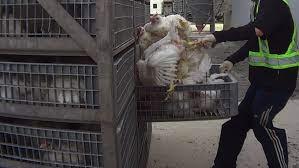 Recent deaths among farm workers in the U.S. have resulted in calls to apply preventive measures. These include rest breaks, access to shade and available clean water.
Recent deaths among farm workers in the U.S. have resulted in calls to apply preventive measures. These include rest breaks, access to shade and available clean water.
United Farm Workers (UFA) and La Union del Pueblo Entera have demanded tat the USDA and OSHA should issue a rule on heat protection standards for outdoor workers. Teresa Romero, president of the UFW stated, “OSHA must step up now to protect the men, women and children who harvest America’s food in truly dangerous temperatures, sacrificing their health and sometimes their lives to keep our nation fed.”
Although field-hands are susceptible to heat stroke, workers within poultry buildings are vulnerable to the effects of high temperature. Activities including catching, vaccination and other strenuous functions can result in stress. Even at a temperature as low as 85F within a house, heat index values of over 105F can occur at high humidity approaching saturation. A heat index of 100F will be measured at a relative humidity of 85%. At 90F, this critical heat index will be attained at a relative humidity of 60%.
Generally, caution should be exercised at a heat index of 90F capable of inducing fatigue especially over a prolonged period. Within a heat index range of 90F to 105F, heat exhaustion is possible with prolonged exposure and physical activity. The heat index range of 105F to 115F represents a dangerous work situation with heat stroke possible with extended exposure and exertion. Supervisors of work crews are advised to monitor temperature, relative humidity and heat index and to provide work breaks and available cold water and to operate ventilation systems at maximum capacity consistent with environmental measurements. It is self-evident that farm managers and supervisors of crews should monitor work environments using a hand-held instrument such as the Kestrel 3000, capable of displaying dry bulb temperature, relative humidity and heat index.